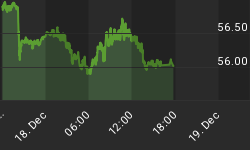Below is an excerpt from a commentary originally posted at www.speculative-investor.com on 1st May 2011.
Below is a chart comparison of the Barrons Gold Mining Index (BGMI) and the US$ gold price covering the period from 1974 through to 1984. In other words, this chart captures the final 6 years of the secular bull market that ended in 1980 and the first few years of the secular bear market that would ultimately continue until 1999-2001. Note that the BGMI portion of the chart has a linear scale whereas the gold portion of the chart has a log scale.
The chart shows that:
1. Major corrections in gold stocks and gold bullion ended during the second half of 1976. As an aside, these corrections unfolded in parallel with an economic rebound.
2. The BGMI traded sideways for about two years beginning in early 1977, despite the fact that gold bullion was in a strong upward trend throughout this period. As a result, in late 1978 the BGMI was still about 50% below its 1974 peak even though gold bullion had returned to its 1974 peak.
3. Although the BGMI finally began to trend upward in 1979, its weakness relative to gold bullion became even more pronounced due to gold's dramatic upward acceleration.
4. When gold bullion peaked at $800-$850 in January of 1980, the BGMI was no higher than it was in 1974. This means that the BGMI did no better than 'tread water' over a multi-year period during which the gold price quadrupled.
5. The BGMI and gold bullion pulled back sharply from their January-1980 peaks into April of that year, at which time the gold sector of the stock market commenced a spectacular 6-month advance that would take the BGMI to almost double its January-1980 peak even though the gold price remained well below the high made early in the year. That is, there was massive strength in the mining stocks relative to the bullion during the months AFTER the bullion had reached its ultimate peak.
6. The BGMI and gold bullion commenced long-term bear markets in October of 1980.

As to why the major gold mining stocks (as represented by the BGMI) fared so poorly relative to gold bullion during the huge 1977-1980 rally in the gold price, we can only surmise. We suspect that it was due to a combination of the following factors:
a) Increasing mining costs.
b) A failure to generate substantial increases in free cash flow due to the cost of replenishing in-ground reserves.
c) Rising interest rates.
d) Widespread belief that the rise in the gold price and the resultant increase in gold mining profitability would prove to be unsustainable.
e) The political risk associated with mining in some parts of the world.
The huge run-up in the gold-mining sector that occurred AFTER the gold price peaked in January-1980 was probably due to the combination of the relative cheapness of the stocks (caused by their subdued response to the earlier multi-year rally in gold bullion) and the general belief that the gold price would move to much higher levels over the years ahead (the majority of market participants never realises that a long-term bull market has ended until well after the fact).
With the exception of rising interest rates, the factors that contributed to the poor performance of the average gold mining stock relative to gold bullion during the second half of the 1970s have also contributed to the failure of the major gold mining stocks to provide any leverage to gains in the bullion price over the past several years. This is why we haven't been interested in owning the major gold mining stocks over the past several years, except as short-term trades when they become very 'oversold'.
The juniors are capable of providing the leverage we seek, although it has been a hard slog in the realm of junior gold mining stocks over the past few months.
We aren't offering a free trial subscription at this time, but free samples of our work (excerpts from our regular commentaries) can be viewed at: http://www.speculative-investor.com/new/freesamples.html















